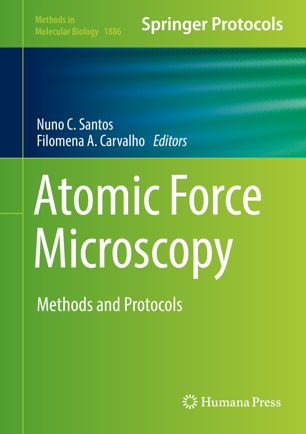

Most ebook files are in PDF format, so you can easily read them using various software such as Foxit Reader or directly on the Google Chrome browser.
Some ebook files are released by publishers in other formats such as .awz, .mobi, .epub, .fb2, etc. You may need to install specific software to read these formats on mobile/PC, such as Calibre.
Please read the tutorial at this link. https://ebooknice.com/page/post?id=faq
We offer FREE conversion to the popular formats you request; however, this may take some time. Therefore, right after payment, please email us, and we will try to provide the service as quickly as possible.
For some exceptional file formats or broken links (if any), please refrain from opening any disputes. Instead, email us first, and we will try to assist within a maximum of 6 hours.
EbookNice Team

Status:
Available4.4
28 reviewsThis book aims to provide examples of applications of atomic force microscopy (AFM) using biological samples, showing different methods for AFM sample preparation, data acquisition and processing, and avoiding technical problems. Divided into two sections, chapters guide readers through image artifacts, process and quantitatively analyze AFM images, lipid bilayers, image DNA-protein complexes, AFM cell topography, single-molecule force spectroscopy, single-molecule dynamic force spectroscopy, fluorescence methodologies, molecular recognition force spectroscopy, biomechanical characterization, AFM-based biosensor setup, and detail how to implement such an in vitro system, which can monitor cardiac electrophysiology, intracellular calcium dynamics, and single cell mechanics. Written in the highly successful Methods in Molecular Biology series format, chapters include introductions to their respective topics, lists of the necessary materials and reagents, step-by-step, readily reproducible laboratory protocols, and tips on troubleshooting and avoiding known pitfalls.
Authoritative and cutting-edge, Atomic Force Microscopy: Methods and Protocols is useful for researchers at different stages, from newcomers to experienced users, interested in new AFM applications.